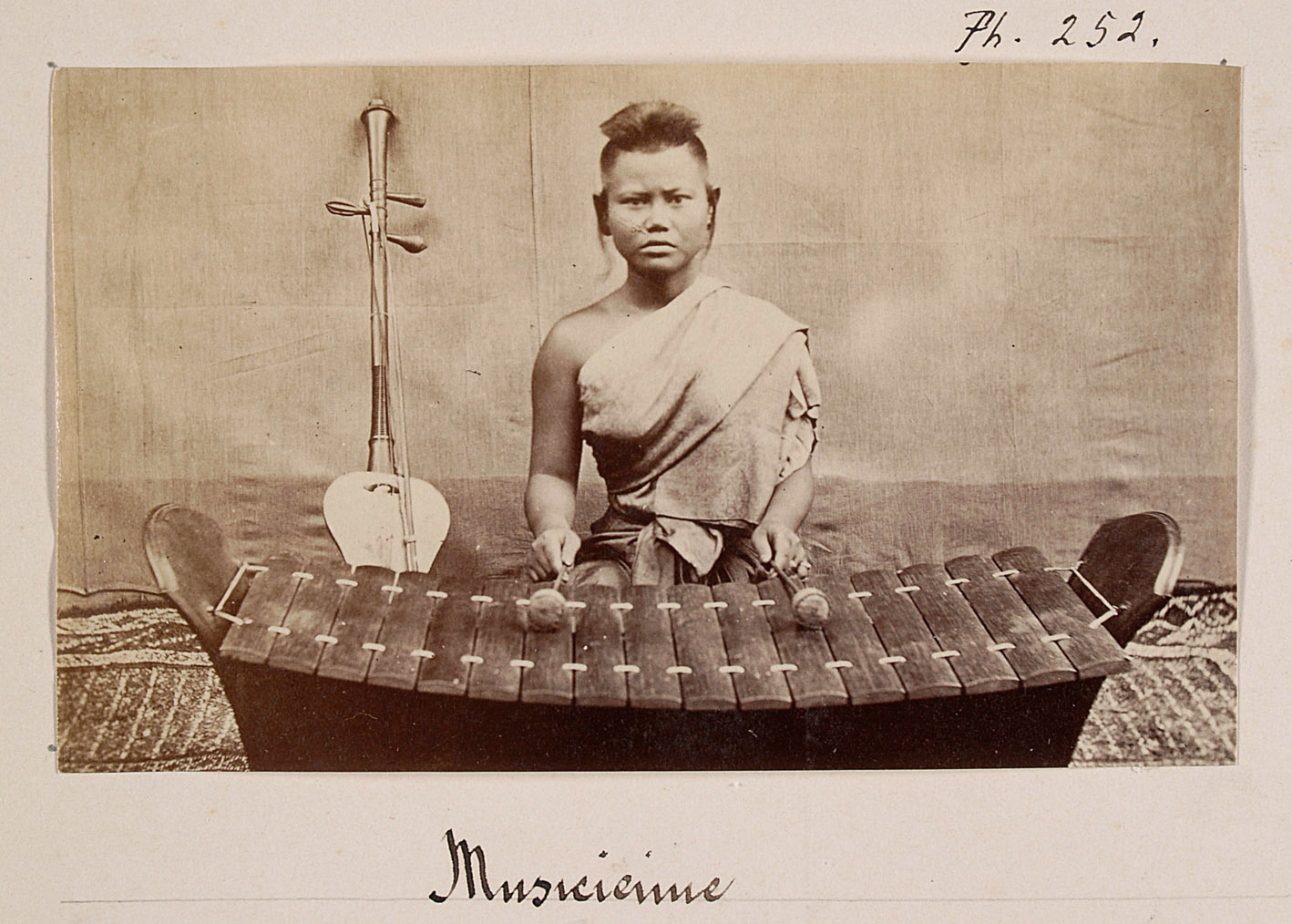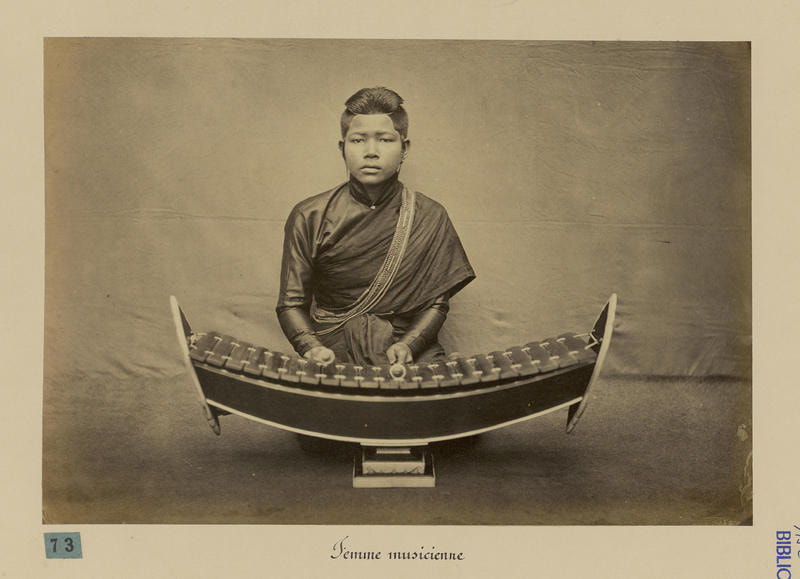|
Mohaori
Mohaori ( Khmer: មហោរី) is one of the traditional musical ensembles of Cambodia. This traditional ensemble is known in full name as Vung Phleng Mohaori (វង់ភ្លេងមហោរី), literally means ''Mohaori Musical Ensemble''. It composed of many kinds of musical instruments, but today it is more specifically applied to a small ensemble of wind, stringed, and percussion musical instruments. This musical art is thought to be predated Angkorian period and probably dated back to as early as the 9th century. Mohaori became more popular and further developed in the Post-Angkorian era until the present days. The songs and lyrics of Mohaori music normally depict the beauty and admiration of nature, and the confession of love. The Music played by this Khmer ensemble is gentle and fluid which is suitable for an entertainment in Cambodian social and traditional events. Nowadays, Mohaori is still a popular Khmer traditional music played in various occasions and fes ... [...More Info...] [...Related Items...] OR: [Wikipedia] [Google] [Baidu] |
Roneat Thung
The ''roneat thung'' or ''roneat thum'' ( km, រនាតធុង) is a low-pitched xylophone used in the Khmer classical music of Cambodia. It is built in the shape of a curved, rectangular shaped boat. This instrument plays an important part in the ''Pinpeat'' ensemble. The ''roneat Thung'' is placed on the left of the ''roneat ek'', a higher-pitched xylophone. The ''Roneat Thung'' is analogous to the ''ranat thum'' of Thai. Etymology ''Roneat'' means xylophone where ''thung'' literally mean oodencontainer in Khmer. This may derived from the shape of this type of xylophone which shaped like a rectangular wooden container. Terry E. Miller and Sean Williams in their book ''The Garland Handbook of Southeast Asian Music'', Roneat Thung is better called ''Roneat thomm/ thum'' which literally means "large xylophone". This name may designates the fact that roneat thum's resonator and note bars are larger and longer than those of roneat ek. History Roneat Thung, the sister mu ... [...More Info...] [...Related Items...] OR: [Wikipedia] [Google] [Baidu] |
Roneat Ek
The ''Roneat Ek'' or Roneat Aek ( km, រនាតឯក; also called ''Roneat Rut'') is a xylophone used in the Khmer classical music of Cambodia. It is built in the shape of a curved, rectangular shaped boat. It has twenty-one thick bamboo or hard wood bars that are suspended from strings attached to the two walls. They are cut into pieces of the same width, but of different lengths and thickness. Originally these instruments were highly decorated with inlay and carvings on the sides of the sound box. Now they are simpler. The Roneat is played in the ''Pinpeat'' ensemble. In that ensemble, sits on the right of the ''Roneat Thung'', a lower-pitched xylophone. The ''roneat ek'' is the analogous equivalent to the Thai xylophone called ''ranat ek'', and the Burmese bamboo xylophone called "pattala". Etymology The word "roneat" is a Khmer word for the bamboo xylophone, which is an ancient musical instrument of Cambodia. According to the Khmer national dictionary, roneat means xylo ... [...More Info...] [...Related Items...] OR: [Wikipedia] [Google] [Baidu] |
Tro (instrument)
The ''tro'' ( km, ទ្រ) is Cambodia's traditional spike fiddles, bowed string instruments that are held and played vertically. Spike fiddles have a handle that passes through the resonator, often forming a spike, on the bottom side where it emerges. The family is similar or distantly related to the Chinese erhu or huqin. The instruments have a soundbox at the bottom of the stick, covered with leather or snake skin. Strings run from pegs at the top of the stick and secured at the bottom, running across the soundbox. The larger the soundbox, the lower the pitch range. Instruments in this family include the two-stringed ''tro ou'', ''tro sau thom'', ''tro sau toch'' and ''tro che'', as well as the three-stringed ''tro Khmer'' spike fiddle. The two-stringed tros are tuned in a fifth, while the three-stringed tro Khmer is tuned in fourths. The tros, with the exception of the tro Khmer, are strung so that the bowstring is permanently placed between the two stings. ... [...More Info...] [...Related Items...] OR: [Wikipedia] [Google] [Baidu] |
Chapei Dong Veng
The Chapei Dang Veng (Khmer language, Khmer: ចាប៉ីដងវែង) or chapey (ចាប៉ី) is a Cambodian two-stringed, long-necked guitar that is usually plucked. It has two double courses of nylon Strings (music), strings. The top and bottom strings are typically tuned to G and C respectively, with the 12 frets having notes 1 D, 2 E, 3 F, 4 G, 5 A, 6 B, 7 C, 8 D, 9 E, 10 F, 11 G, 12 A. Chapei Dang Veng is a Cambodian musical tradition closely associated with the life, customs and beliefs of the Cambodian people. It features the chapei (a type of lute often played at cultural festivals) accompanied by singing. Song lyrics range from the educational and a type of social commentary, to satire while incorporating traditional poems, folk tales or Buddhist stories. The tradition is considered to have multiple functions within Cambodian communities, such as safeguarding traditional rituals; transmitting social, cultural and religious knowledge and values; providing expos ... [...More Info...] [...Related Items...] OR: [Wikipedia] [Google] [Baidu] |
Tro Khmer
The ''tro Khmer'' () is a traditional bowed string instrument from Cambodia. Its body is made from a special type of coconut covered on one end with snake skin, and it has three strings. Instruments are not standardized, and coconuts vary in size; however the instrument's sound bowl may have dimensions 16.5 cm by 14 cm. In the past the strings were made of silk. By the 1960s, metal strings were in use, and the sound of the instrument changed, becoming sharper. The ''tro Khmer'' is closely related to a Thai instrument called ''saw sam sai''. The instrument may be related to the similarly shaped Indonesian version of the rebab, arriving there from Muslim culture, c. 15th century a.d. A difference between the two is the number of stings; where the Indonesian rebab has two strings, the tro Khmer has three. References See also * Indonesian rebab *Tro (instrument) *Traditional Cambodian musical instruments *Music of Cambodia *Huqin ''Huqin'' () is a family of bowed ... [...More Info...] [...Related Items...] OR: [Wikipedia] [Google] [Baidu] |
Kong Von Thom
The kong von thom or ''kong thom'' ( km, គងធំ) plays a melodic line in the Cambodian ''pinpeat'' ensemble almost identical to that of the roneat thung (large xylophone). The ''kong thom'' dwells more steadily on the pulse without pulling or delaying the beat (melody). The player uses soft mallets for indoor performance, hard ones for outdoors. The ''kong von thom'' is analogous to the ''khong wong yai'' used in Thailand. History The Khmer word ''korng/ kong'' "gong" is refers to all types of gong including the flat or bossed gong, single or in a set, suspended on cords from hooks, or a gong placed over a frame. The history of these gongs can be traced in part from the epigraphy and iconography of Funan-Chenla and Angkor periods, for many can be seen carved on ancient Khmer temple. Construction The gong circle-maker creates sixteen bossed gongs made of copper with bronze admixture. He suspends them on rattan frames in a circle around the player. He tunes the individua ... [...More Info...] [...Related Items...] OR: [Wikipedia] [Google] [Baidu] |
Kong Toch
The ''kong vong toch'' ( km, គងវង់តូច or kong touch km, គងតូច) is a number of gongs that are attached to a circle-shaped rack, closely resembling its larger relative, the kong thom. Both instruments belong to the percussion family of traditional Khmer instruments, along with the roneat ek, roneat dek, and roneat thung. These instruments are all performed in the pinpeat and mahaori orchestras. The kong toch is made of three parts; the frame of the gong circle, the gongs themselves, and the gong mallets. The ''kong toch'' is analogous to the ''khong wong lek'' used in Thai. History The Khmer word ''korng/ kong'' "gong" is refers to all types of gong including the flat or bossed gong, single or in a set, suspended on cords from hooks, or a gong placed over a frame. The history of these gongs can be traced in part from the epigraphy and iconography of Funan-Chenla and Angkor periods, for many can be seen carved on ancient Khmer temple. Construction and Des ... [...More Info...] [...Related Items...] OR: [Wikipedia] [Google] [Baidu] |
Royal Palace, Phnom Penh
The Royal Palace of Cambodia ( km, ព្រះបរមរាជវាំង) is a complex of buildings which serves as the royal residence of the King of Cambodia. Its full name in Khmer is the ''Preah Barom Reacheaveang Chaktomuk Serey Mongkol'' ( km, ព្រះបរមរាជវាំងចតុមុខសិរីមង្គល, link=no).The Cambodian monarchs have occupied it since it was built in the 1860s, with a period of absence when the country came into turmoil during and after the reign of the Khmer Rouge. The palace was constructed between 1866 and 1870, after King Norodom relocated the royal capital from Oudong to Phnom Penh. It was built atop an old citadel called ''Banteay Keo''. It faces approximately East and is situated at the Western bank of the cross division of the Tonle Sap River and the Mekong River called ''Chaktomuk'' (an allusion to Brahma). History The establishment of the Royal Palace in Phnom Penh in 1866 is a comparatively recent even ... [...More Info...] [...Related Items...] OR: [Wikipedia] [Google] [Baidu] |
Cambodian Musician Playing Chapey, 1880
Cambodian usually refers to: * Something of, from, or related to the country of Cambodia ** Cambodian people (or Khmer people) ** Cambodian language (or Khmer language) ** For citizens and nationals of Cambodia, see Demographics of Cambodia ** For languages spoken in Cambodia, see Languages of Cambodia Cambodian may also refer to: Other * Cambodian architecture * Cambodian cinema * Cambodian culture * Cambodian cuisine * Cambodian literature * Cambodian music * Cambodian name * Cambodian nationalism * Cambodian descendants worldwide: ** Cambodian Americans ** Cambodian Australians ** Cambodian Canadians ** Cambodians in France See also * *List of Cambodians {{Short description, none This is a list of notable Cambodian people, persons from Cambodia or of Khmer descent. * Adda Angel * Am Rong * Ampor Tevi * Arn Chorn-Pond * Beat Richner * Bérénice Marlohe * Bour Kry * Chan Nak * Chan Sy * Chantho ... {{disambig Language and nationality disambiguation pages ... [...More Info...] [...Related Items...] OR: [Wikipedia] [Google] [Baidu] |
Ching (instrument)
Ching (also spelled Chheng, km, ឈិង or Chhing, th, ฉิ่ง) are finger cymbals played in Cambodian and Thai theater and dance ensembles. Construction and use Joined by a cord that runs through the center, ching are bowl-shaped, about 5 centimeters in diameter, and made of bronze alloy—iron, copper, and gold. They are struck together in a cyclical pattern to keep time and regulate the melody, and they function as the "timekeeper" of the ensemble. The rhythm typically consists of alternating the accented closed stroke with an unaccented open "ching" stroke. The name "ching" is probably onomatopoeic for this open sound. Musical context The Cambodian ensemble—which has traditionally accompanied court dance, masked plays, and shadow plays and ceremonies—is composed of vocalists and instruments: gong chimes, reed instruments, metallophones, xylophones, drums, and ching. A Thai ensemble consists of stringed fiddles, flutes, zither, xylophones, gong circles, drums, and c ... [...More Info...] [...Related Items...] OR: [Wikipedia] [Google] [Baidu] |








.jpg)
.jpg)